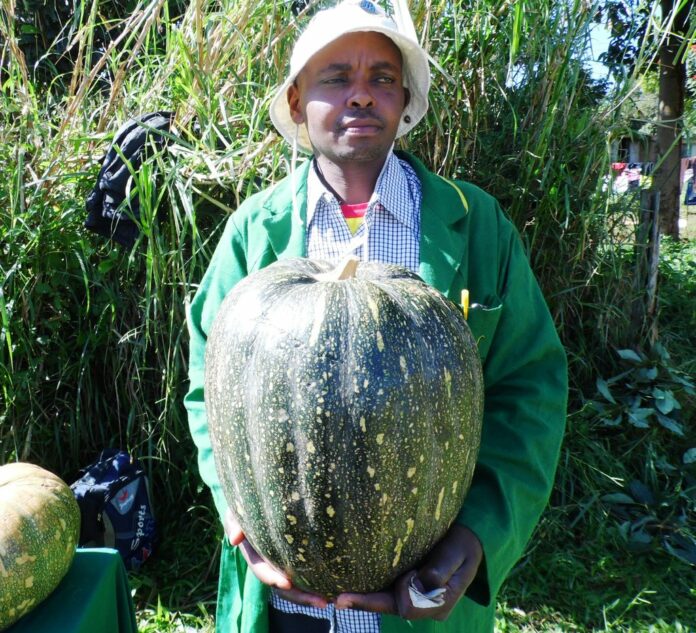Pumpkin farming in Kenya: BY ALEX WACHIRA: Pumpkins are served in most meals as a compliment serving the same purposes as potatoes. They are used to make pumpkin flour that addresses health issues such as diabetes and obesity.
They are a nutritional and delicious fruits eaten and grown mostly in the rural areas. They have a long shelf life of about three months thus can be stored for longer before sale or consumption. The pumpkin plants are advantageous as the leaves can be used as alternative greens just like spinach and kales.
A fully grown pumpkin weighs between four and even twenty kilograms. Pumpkins take about three to five months to grow to maturity and are ready for sale depending on the variety. The seeds are quite affordable as they are sold at fair prices. For successful pumpkins farming a farmer should source good sees plant at least 10 of them in one hole for better results.
Seeds can be soaked the night before planting for a smoother sprouting and should not be sunk too deep into the soil. After sprouting they expand and each seed produces a fruit that weighs between 17 and 30 kilograms.
How you can make a million from an acre of watermelons
Pumpkin farming in Kenya: Planting
Pumpkins are planted in places that receive adequate sunshine at least six hours daily and the soil is moist. Pumpkins are planted in holes that measures 2 by 2 feet by 1 foot deep.
A farmer makes use of organic manure from livestock to increase soil fertility for maximum production as it plays a major role in contributing to their size.
Pumpkin farmers are now shifting from normal pumpkins to giant pumpkin cultivation. The giant pumpkin varieties can weigh up to 40 kilograms when mature fetching close to three times more when compared to the normal pumpkins.
Pumpkin farming in Kenya: Varieties
Varieties include white giant from South Africa, Israel giant, Egyptian giant, “Squach” and “Dola”. These varieties are easy to grow and are easy to manage and are rarely attacked by pests compared to normal pumpkins. They are cultivated twice a year. Normal pumpkins weigh between one to seven kilograms.
Harvesting
Pumpkins are harvested when the skin reaches full color and the fruit hardens.
For a longer shelf life and to prevent harm, a farmer should leave a stalk on the fruit. Pumpkins should be stored at a cool, dry and dark place away from heat and humidity.
Through value addition the pumpkins are grinded into flour which has a high demand and fetches more money. The flour is used to make porridge, chapattis, mandarin, cakes and bread.
Diseases
Common diseases that affect pumpkins are bacterial wilt, downy mildew and powdery mildew. A farmer should spray fungicides, remove infected plants and water only roots and in the morning or during the day to control diseases and for prevention too.
Pests that attack pumpkins include moles, mice, aphids, trips, white flies, squirrels, stray rabbits. A farmer should also weed out to avoid nutrients and water competition.









These are conmen…please be advised.stay away from these people. Nothing like Opica variety.ave met them in person.they have cunning skills
I should have seen your comment a few weeks ago… I got a few seeds at 25 bob per seed. they are doing well but now i am not sure what to expect,,hehe
They should be arrested. and Bizna Kenya should do Due diligence before posting such people.